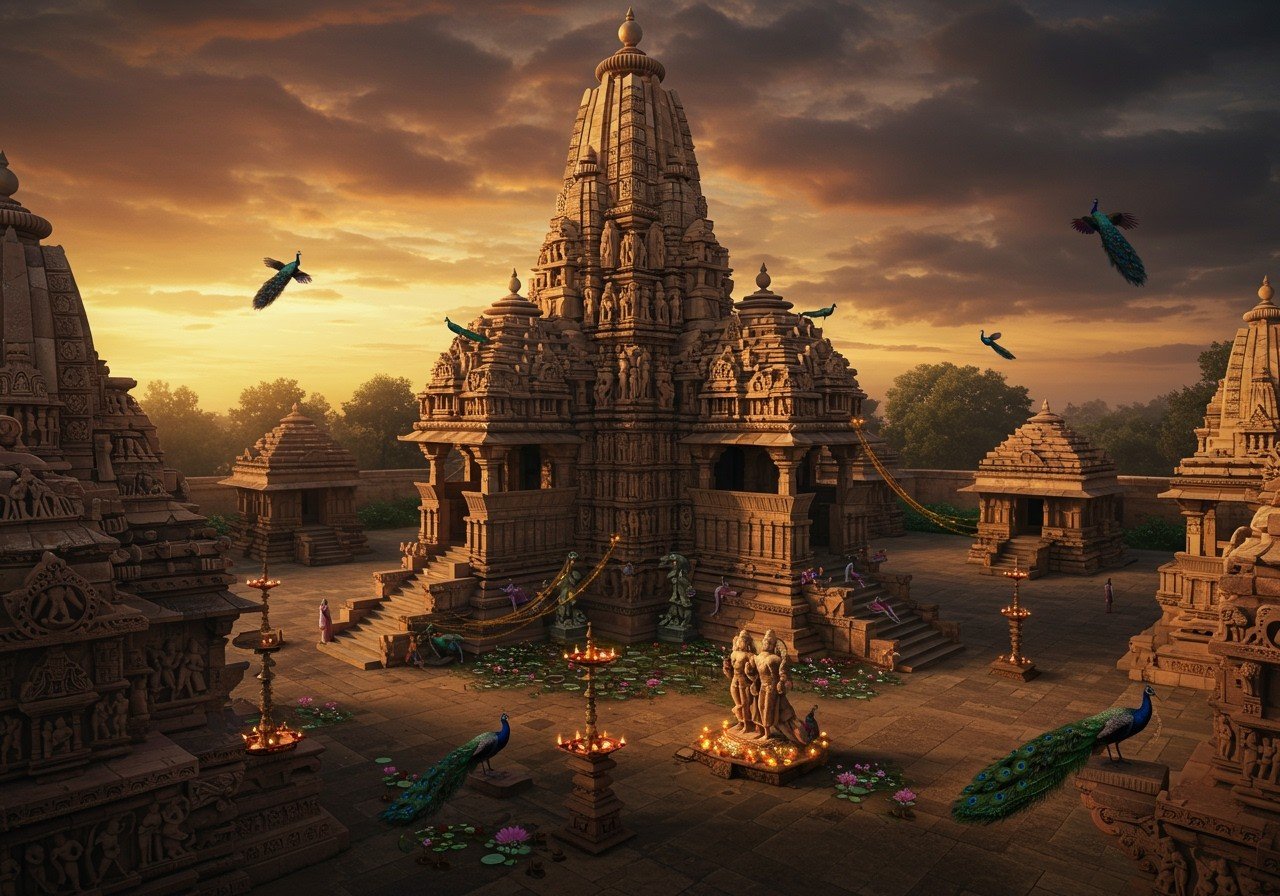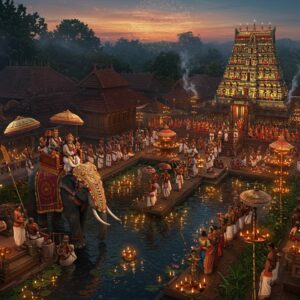
Bharat’s history is a treasure trove of stories about great kings and magnificent kingdoms. Among these shining stars is King Kumarapala, a celebrated ruler of the Chaulukya dynasty. His story isn’t just a chapter in a history book; it’s a living legacy that shaped the cultural and spiritual fabric of Gujarat. Let’s take a journey back in time to understand the man behind the legend and how his influence continues to touch our lives today.

The Rise of a Visionary King
The Chaulukya dynasty had already established a strong presence in western India when Kumarapala ascended the throne in 1143 CE. It was a time of great opportunities but also immense challenges. He inherited a kingdom that was a vibrant centre for trade, but it was also surrounded by rival powers. Kumarapala wasn’t just born a king; he proved himself to be a true leader, guiding his people towards an era of peace and prosperity that would be remembered for centuries.
So, what makes his reign, from 1143 to 1172 CE, so special? It was his remarkable ability to balance military strength with a deep commitment to Dharma and cultural growth. He was a ruler who protected his people with the sword and nurtured their souls with faith and art.
The Enduring Legacy of Kumarapala
Kumarapala’s impact can be felt across three main areas: his strength as a warrior, his love for architecture, and his deep spiritual convictions. Together, they paint a picture of a truly complete and enlightened ruler.
A True Protector: Military Prowess and Stability
A king’s first duty is to protect his kingdom, and Kumarapala was a master strategist and a fearless warrior. He understood that peace was the foundation for prosperity.
- Securing the Borders: He decisively defeated neighbouring kings like Arnoraja of the Chahamana dynasty and Mallikarjuna of the Shilahara dynasty. These victories were not just about conquest; they were about establishing Chaulukya dominance and ensuring the safety of his people in Western India.
- Strategic Expansion: By annexing the rich territory of Malwa and extending his authority to the historic fort of Chittor, he strengthened his empire. This brought immense stability and resources, allowing art and culture to flourish without the constant fear of invasion.
A Golden Age of Architecture: Temples That Touch the Sky
If you travel through Gujarat today, you can still witness the architectural marvels born from Kumarapala’s vision. His reign is rightly called a golden age for temple construction. Much like the stunning Kandariya Mahadeva Temple built by the Chandelas, Kumarapala’s contributions are timeless.
He was a generous patron, commissioning numerous Brahminical and Jain temples. One of his most significant projects was the grand temple at the sacred site of Somanatha, which he commissioned in 1169 CE. He also restored the Kedareshwar temples in his capital, Anahilapataka (modern-day Patan), and rebuilt the Somnath-Patan tirtha site, ensuring pilgrims had beautiful temples and ghats for their worship. Under his patronage, the unique Maru-Gurjara style of architecture blossomed, leaving a lasting influence on temple design for generations.
To bring a piece of this divine architectural devotion into your own home, you can explore our collection of beautifully crafted holy idols at Poojn.in. Each piece reflects the rich artistic heritage that kings like Kumarapala championed.
The Spiritual Heart of a King
Perhaps the most fascinating aspect of Kumarapala’s life was his spiritual journey. Though born into a Shaivite family, he was deeply drawn to Jainism. He became one of its greatest royal patrons, but his approach was one of harmony, not exclusion.
- Champion of Ahimsa: Embracing the Jain principle of ahimsa (non-violence), Kumarapala introduced policies against animal slaughter, alcohol, and even gambling. He envisioned a society built on compassion and moral values, a true Dharma Rajya.
- A Unifying Force: While Jain texts celebrate him as a great sponsor of their faith, his own inscriptions often invoke Lord Shiva. This shows his immense respect for all Indian religious traditions. He created an environment of religious harmony where different faiths could coexist peacefully.
Connecting with Our Glorious Past Through Poojn.in
Learning about rulers like Kumarapala reminds us of the depth of our culture. At Poojn.in, we strive to help you connect with these traditions in your daily life. Whether you are performing a puja or simply wish to adorn your home with symbols of our heritage, we are here for you.
For your daily rituals, find authentic and pure items, from a heavy-weight Pure Copper Debi Ghat to sacred herbs and Jaribooti. We believe that using the right materials enhances the spiritual experience, connecting you to generations of devotees who came before.
In Conclusion: A Legacy That Continues to Inspire
King Kumarapala was more than just a conqueror; he was a builder, a visionary, and a compassionate leader. His legacy is etched in the stones of Gujarat’s temples and lives on in the region’s spiritual ethos. He teaches us that true strength lies in balancing power with piety, and progress with tradition. By remembering his contributions, we honour not just a great king, but the very soul of Bharatavarsha.
Frequently Asked Questions About Kumarapala
Many people are curious about this great king and his era. He ruled over the region of modern-day Gujarat during the 12th century, a period known for its cultural richness. His significance today lies in how he masterfully blended strong governance with deep spiritual values, creating a prosperous and harmonious society. His contributions to temple architecture, promotion of trade, and support for Jainism’s principle of non-violence have left a lasting mark on India’s cultural and religious landscape, reminding us of a time of great enlightenment and prosperity.


